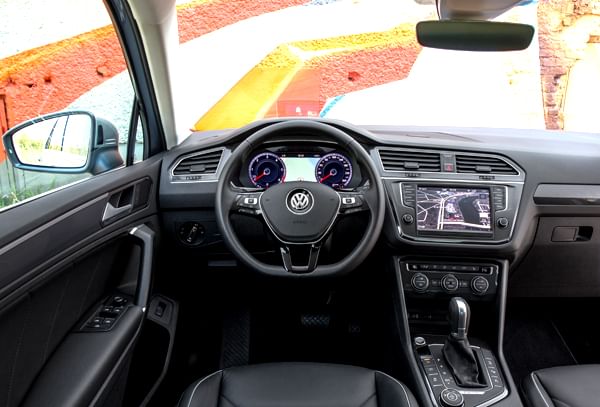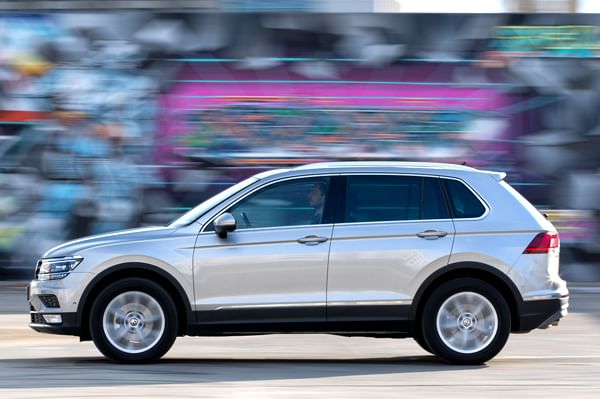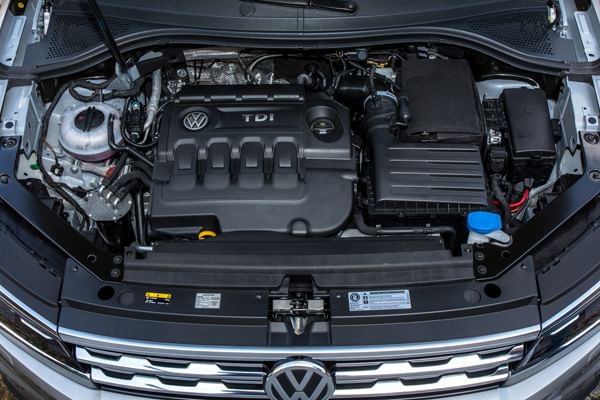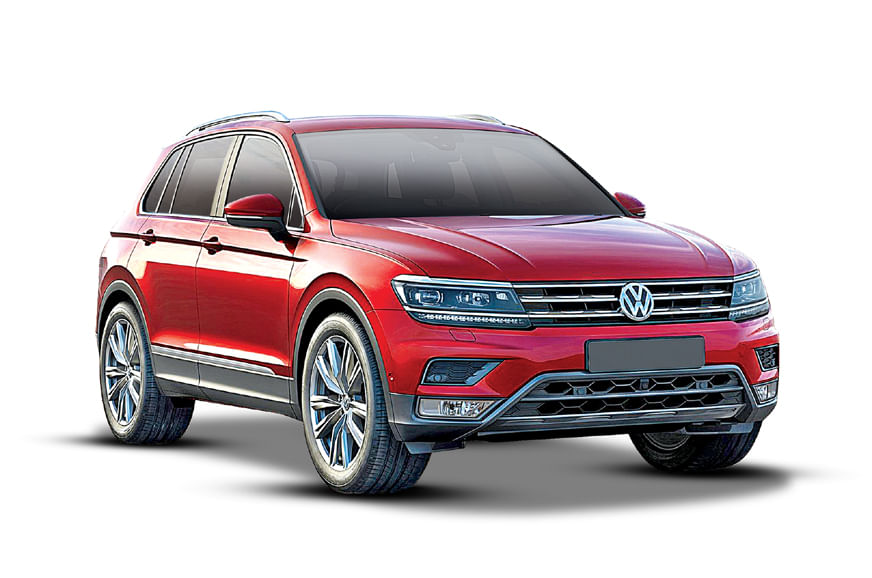2016 Volkswagen Tiguan review, test drive
The Tiguan is a new SUV from VW, only its second ever in India, and it’s a model the company just has to get right.
Updated on Apr 24, 2017 10:36:32 AM
51,975 Views
Follow us on



What is it?
It is Volkswagen’s first all-new product line to be launched in India in many years, as well as its second SUV in our country after the slow-selling Touareg. In recent times, we’ve seen several variants and updates of the Polo and Vento, two generations of the Jetta, two of the excellent Passat (the last of which was discontinued at its prime), a fleeting glimpse at the Phaeton, and of course, there’s the Beetle, which just came back to our shores last year. But the SUV segment, ever so popular in India, has never been properly tapped by VW. The good news is that there are a number of SUVs from the brand on their way to us, and it all starts with this, the new Tiguan.
Due in mid-2017, it’s the first SUV from the VW Group to be based on the new MQB platform, and to put it into perspective, the Tiguan will likely be priced in the region of Rs 30 lakh, which puts it right in the crosshairs of the Hyundai Santa Fe and the upcoming Nissan X-Trail. And though the car you see here is a five-seater designed for Europe, VW is also developing a longer, seven-seat version for developing markets, and that could be the one that finds its way to Indian showrooms.
 At first glance, it seems rather simple – square and upright, with nothing but straight lines making up its bodywork. True as that might be, the design takes a little while to get under your skin, and there are a lot of details that start to stand out. The headlights, for example, are all-LED and very intricately designed, as are the chrome strips that make up the grille. The bonnet has two sets of sharp lines that define it, and a strong shoulder line runs down the sides to meet the tail-lamps. At the back, it’s a familiar sight if you’ve seen modern VWs like the Jetta and new Passat, but even here, the tail-lamps have now been given a boomerang-like shape. Overall, it does have presence, but it’s perhaps not as memorable to look at as some of the other SUVs out there.
At first glance, it seems rather simple – square and upright, with nothing but straight lines making up its bodywork. True as that might be, the design takes a little while to get under your skin, and there are a lot of details that start to stand out. The headlights, for example, are all-LED and very intricately designed, as are the chrome strips that make up the grille. The bonnet has two sets of sharp lines that define it, and a strong shoulder line runs down the sides to meet the tail-lamps. At the back, it’s a familiar sight if you’ve seen modern VWs like the Jetta and new Passat, but even here, the tail-lamps have now been given a boomerang-like shape. Overall, it does have presence, but it’s perhaps not as memorable to look at as some of the other SUVs out there.What’s it like on the inside?
It’s a pleasure to see VW finally trying to break away from its clean but thus far unadventurous interior design language. It’s still very neat, but there are signs of the mould being broken – angles on the central console and dashboard, bits of really rich-looking champagne gold trim here and there, contrast stitching on some models and just altogether more modern-looking switchgear. This dashboard is all black, but as is the norm in India, expect it to come to our shores with a dual-tone scheme and lighter colours. As ever, there’s no compromise on fit and finish, and everything in this cabin feels solid and high-quality like a German car should; our Tiguan will be assembled locally, however, so hopefully this won’t change. It really feels as good as the new B8 Passat in here, and it should, as the two will be in a similar price range.

Equipment is another thing for which we’ll have to just wait and see, but let’s hope for as many of this car’s long list of goodies as possible. It’s got a heads-up display, a digital instrument cluster (like the Audi TT and Q7) surround cameras and sensors, three-zone climate control, heated electric front seats with memory, engine stop-start, the latest VW touchscreen with support for Apple Carplay, Android Auto and Mirror Link (just like the new Skoda Octavia), drive mode selection, a separate off-road mode selector dial for AWD cars and, as usual, a few radar and camera-based features like auto emergency braking, which we definitely won’t get in our market.
The space in the new Tiguan is very impressive, and VW claims class-best figures in most dimensions, in Europe. The boot, for example, with the rear seat slid forward (but not folded), can hold a whopping 615 litres of stuff. The second row is spacious enough in this configuration, but when it’s slid all the way back, legroom is at luxury sedan levels; the seatback can be reclined too. The seats too are incredibly comfortable and generously supportive, be it at the front or the back. The leather used feels rich and nice to touch, and there’s a good amount of it on the door pads as well. There’s actually very little to fault in this cabin, and it scores high in most areas.
What’s it like to drive?
As with most larger VW models, the mainstay of the Tiguan will be the 2.0-litre TDI engine, which is available in Europe in 150hp, 190hp and twin-turbo 240hp guises, with the former two likely to make it to India. There are also some petrol engine options, and both motors are available in various configurations with either a six-speed manual or seven-speed DSG dual-clutch auto, front-wheel drive or ‘4Motion’ all-wheel drive.
 The driving experience will be very familiar if you’ve driven one of the newer VW Group cars with this same engine – especially the Skoda Octavia or Superb. It’s a little clattery at start-up, but then, it settles down into a smooth rhythm at low revs, only becoming audible again when you rev it past 3,000rpm. You have to hand it to the superb cabin insulation for this, because it also does a great job of keeping road and wind noise out, even at derestricted Autobahn speeds, as we got to experience here in Berlin. The 150hp motor feels more than strong enough for a car this big, and there’s only the slightest delay when you pull it hard from low revs; it gets into its stride really quickly. The seven-speed DSG gearbox is, as ever, brilliant – intuitive, quick and never letting you know it’s there. What’s even more impressive is the manual – the slick, light and smooth short-throw lever is a joy to use, and there’s a great feature wherein, if you stall the car, you just have to press the clutch, and the auto stop-start system turns it on again, so you can continue on with minimal embarrassment.
The driving experience will be very familiar if you’ve driven one of the newer VW Group cars with this same engine – especially the Skoda Octavia or Superb. It’s a little clattery at start-up, but then, it settles down into a smooth rhythm at low revs, only becoming audible again when you rev it past 3,000rpm. You have to hand it to the superb cabin insulation for this, because it also does a great job of keeping road and wind noise out, even at derestricted Autobahn speeds, as we got to experience here in Berlin. The 150hp motor feels more than strong enough for a car this big, and there’s only the slightest delay when you pull it hard from low revs; it gets into its stride really quickly. The seven-speed DSG gearbox is, as ever, brilliant – intuitive, quick and never letting you know it’s there. What’s even more impressive is the manual – the slick, light and smooth short-throw lever is a joy to use, and there’s a great feature wherein, if you stall the car, you just have to press the clutch, and the auto stop-start system turns it on again, so you can continue on with minimal embarrassment.
This is Germany, so in order to evaluate the ride quality, we had to literally take the Tiguan off the tarmac and onto a forest track, which was still a smoother surface than many of our Indian roads. The great news is that the suspension has a nice pliancy to it, just like the Jetta, and though this car feels light on its feet, when it comes to ironing out bumps, it feels just as solid as the rest of them. It’s a pretty tidy handler too, again, feeling like just a taller version of the Jetta, and though the steering is a little light, even in Sport mode, it’s got enough heft and accuracy to make quick lane changes at three-digit highway speeds with full confidence. VW did also take us on an obstacle course to demonstrate the Tiguan’s off-roading ability using the special off-road version which has a smaller chin for better approach angles; VW is still debating which of the two versions to bring to India. It’s actually incredibly capable, with the Haldex-based AWD system sailing us over obstacles you’d think you’d need a low-range gearbox for.
Should I buy one?
You won’t be able to buy one mid-2017, and while that does seem like a long time away, there’s not much else going on in the segment to affect your decision until then, save for maybe the new Nissan X-Trail. And it’s a decision you’re going to want to seriously consider, because the Tiguan is an incredible all-rounder. Like most VW cars, it’s perhaps not as flamboyant or exciting to look at as some Indians might like (it’s designed with European restraint, of course), but its shape alone gives it a lot of presence. And what Indians love about VWs is the solid German build, the comfortable ride and the latest technology – all of which is in ample supply in the Tiguan. A lot of things remain to be seen in a car that will be locally assembled – the final fit and finish, the ride quality, the interior spec and the equipment list, but VW knows that it can’t compromise on these things in the new and discerning India. The Tiguan has a lot of promise and we can’t wait to see it on our roads.
Upcoming
Copyright (c) Autocar India. All rights reserved.







Comments
Member Login
Personal Details
No comments yet. Be the first to comment.